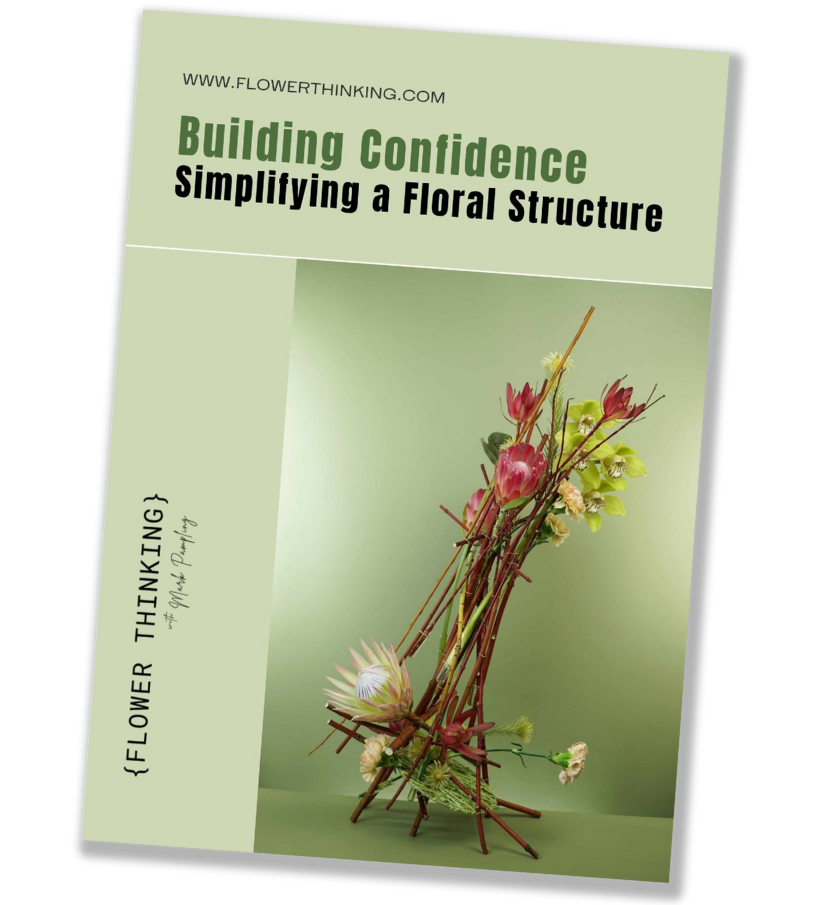When someone says they are making a “hand tied”, the exact nature of what they are creating might be ambiguous. They could be making a gift bouquet in a florist shop, a structural design for a competition entry, or even creating a table scape for a dinner table.
The term ‘hand tied’ gets applied to a variety of different design styles, and the phrase can be seen within a number of definitions in different manuals and handbooks. In the commercial floristry world, a ‘hand tied’ has become a shorthand version of the description ‘hand tied bouquet’, or even ‘hand tied natural stem, spiral bouquet’.
But when someone is making a ‘hand tied’ they might be making a:
- Hand tied bouquet
- Hand tied design
- Freestanding hand tied structure
- Hand tied standing bouquet
- Bound composition
For me, the term ‘hand tied’ simply equals the technique of tying materials together with the hand ….. using some kind of binding material (jute, string, bind wire, raffia, etc.). The context in which the tying is being done then usually determines the description of the style being created.
The common element in all the terms listed above is that they are all tied using the hand - the final results are often very different depending on the application, style and other design choices. A hand tied can be made in (and tied with) the hand, or it can simply be tied with the hand during its construction on the workbench.
Some of my UK colleagues separate hand tied styles into two broad categories:
- Hand tied bouquets
- Hand tied designs
Their categories can be a useful way of selecting a suitable approach to making or evaluating a hand tied.

